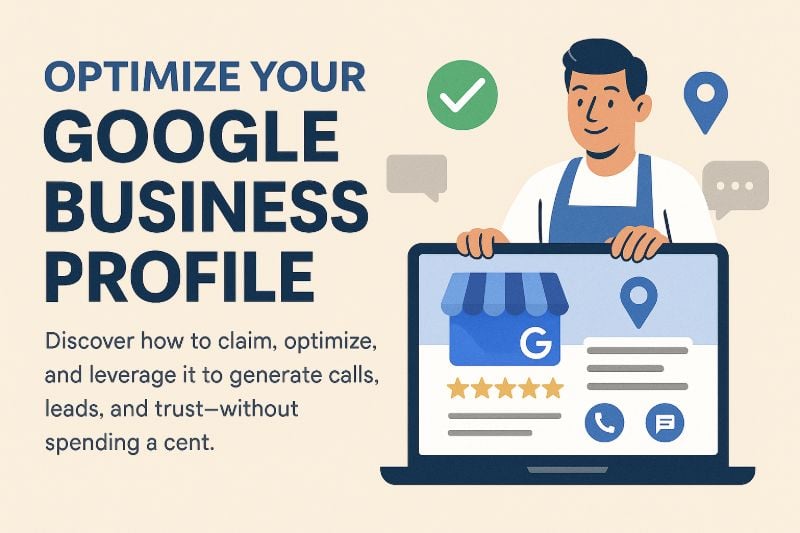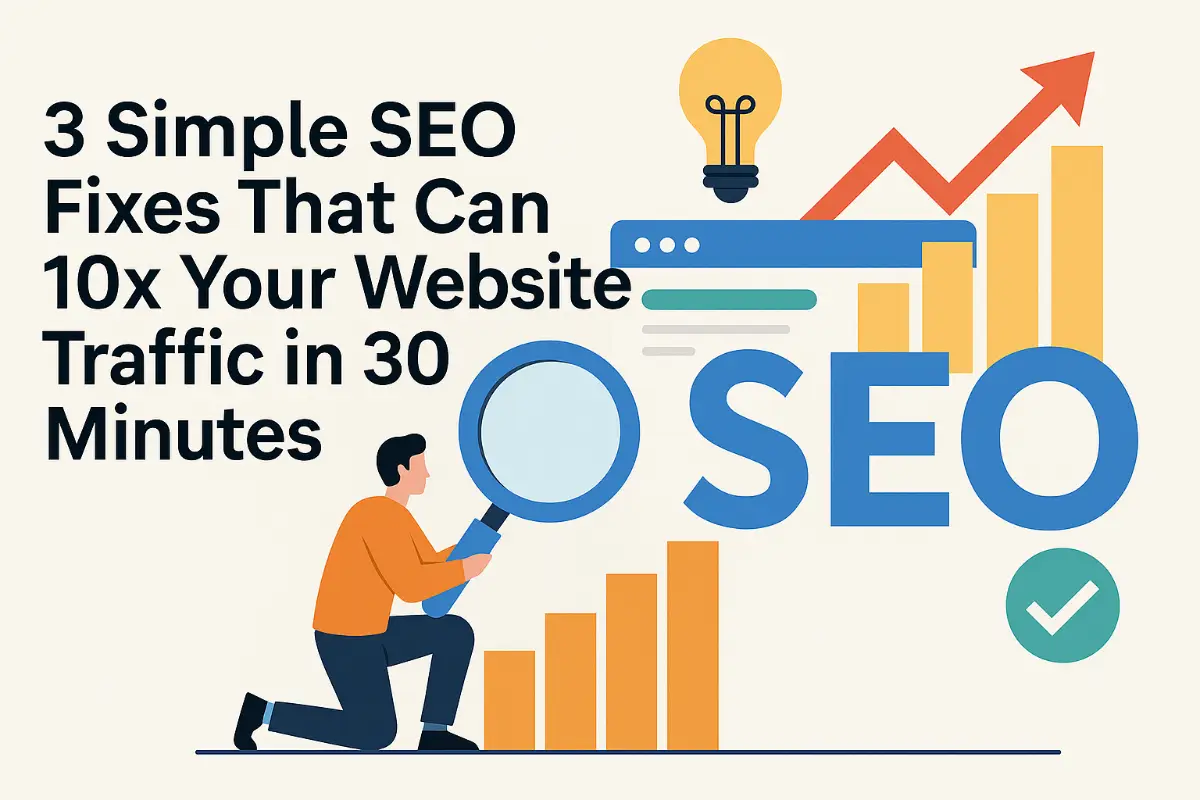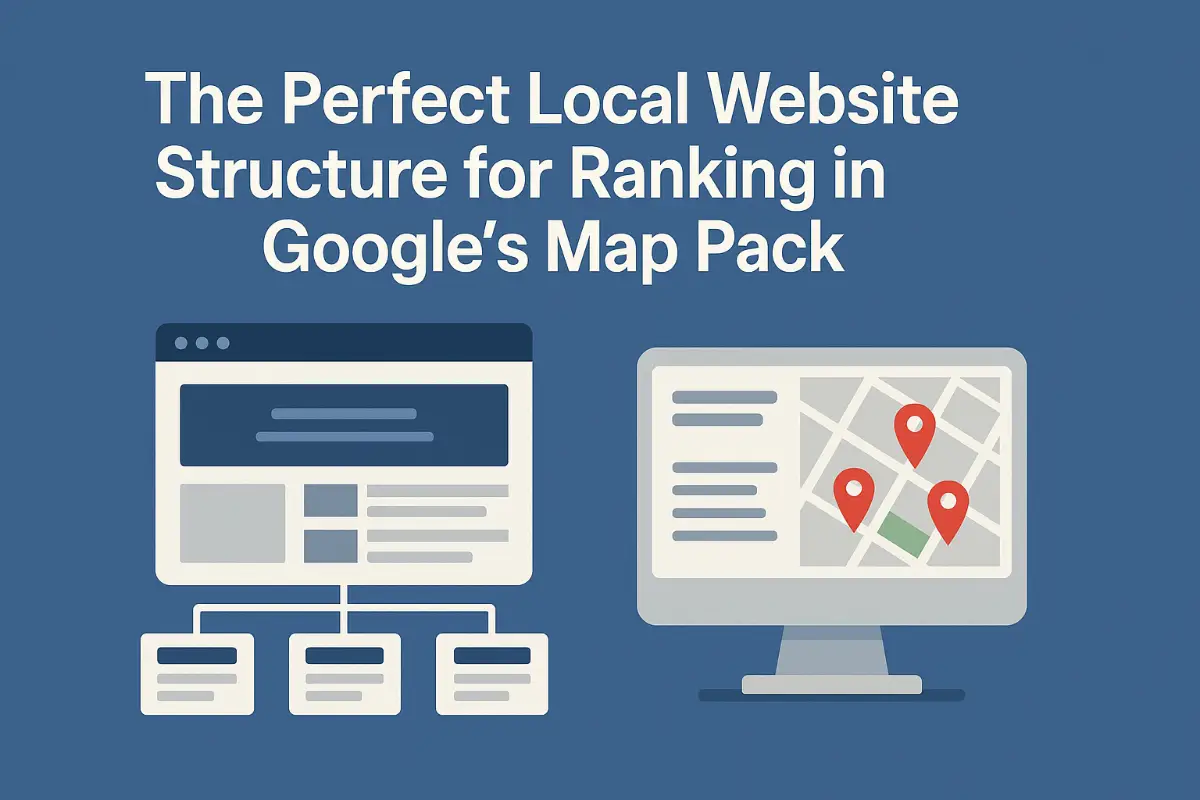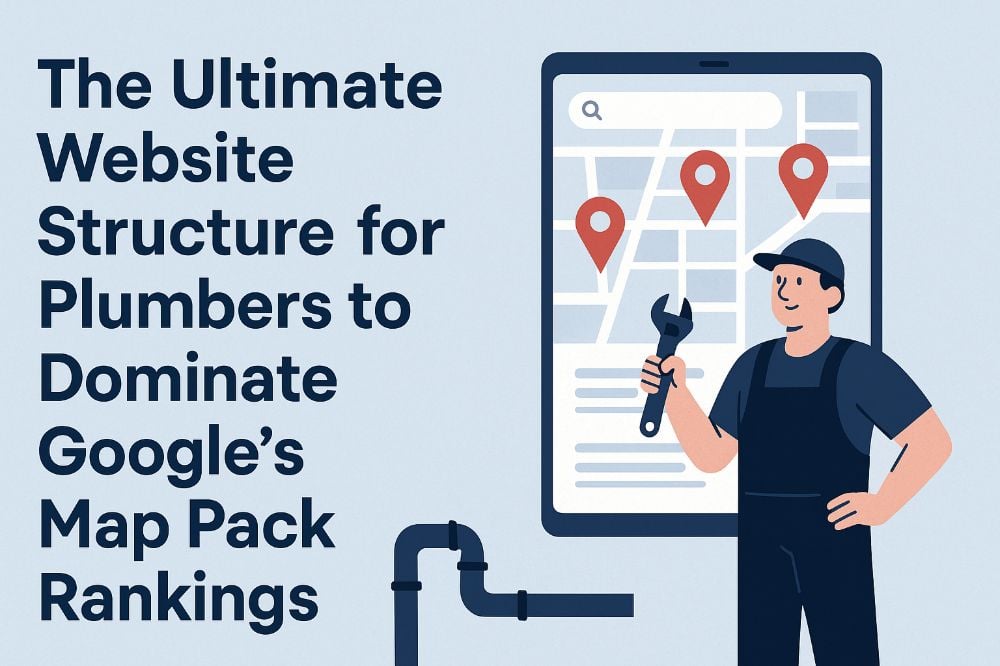
Step-by-Step Guide to Optimizing Your Google Business Profile for Better Local Visibility
If you're running a local business in the United States, whether you're an HVAC contractor in Dallas or a pest control company in Tampa, your Google Business Profile (GBP) is one of your most valuable assets. It’s your digital storefront, and when it’s set up right, it gets you found on Google Maps and in the coveted local search 3-pack.
But many business owners either skip steps or set it up once and forget about it. That’s a mistake. An optimized Google Business Profile can drive real calls and bookings every week, while an incomplete one can leave you invisible.
In this guide, we’ll walk you through how to fine-tune your GBP to help you show up more often and convert more searches into clients—all using the same process we use at WebPresence to get service-based businesses ranking faster.
We’ll cover:
- Step 1: Choose Categories That Match Every Service You Offer
- Step 2: Add Specific Services to Match Real Search Terms
- Step 3: Write a Description That Builds Trust and Converts
- Step 4: Get More (and Better) Customer Reviews
- Step 5: Keep Things Fresh with Weekly Posts
- Step 6: Use Real Photos that Show the Work You Do
- Step 7: Boost Local Trust with Citations and Backlinks
- Step 8: Track Performance and Adjust Based on Results
Step 1: Choose Categories That Match Every Service You Offer
When setting up your GBP, Google lets you choose a primary category—and up to nine more. But most business owners just pick one and call it a day. That’s a big opportunity missed.
Each additional category you add opens up more chances to show up in local searches. Think of it as adding extra signs on your storefront.
Example: A garage door repair company might use:
- Garage Door Supplier (primary)
- Garage Door Repair Service
- Door Installation Contractor
- Emergency Garage Door Service
This way, you're eligible to appear in a wider range of local searches—and reach more of the right people.
Action Tip: Open your Google Business Profile, go to “Edit profile,” then update your categories to include all relevant services you offer. Be honest—don't add anything you don’t really do.
Step 2: Add Specific Services to Match Real Search Terms
This section lets you break your categories into detailed services. And it’s one of the most underused features in the entire Google Business setup. Don’t just say “Landscaping.” Say what kind of landscaping—people are searching for specifics.
Example for a landscaper in Phoenix:
- Drought-Tolerant Landscaping
- Backyard Makeovers
- Sprinkler System Repairs
- Landscape Lighting Installation
These aren’t just fluff—they’re keywords. Google uses them to match your business to what people are searching for right now.
Tip: If you’re not sure what to include, look at profiles of top competitors in your city, or use AI tools to brainstorm service ideas based on your trade and region.
Once you’ve built your list, go to your profile, select “Edit services,” and add them in under each category.
Step 3: Write a Description That Builds Trust and Converts
Your business description is prime real estate. You get 750 characters to say who you are, what you do, where you operate, and why people should trust you. Use them wisely.
Think of it like this: If a homeowner reads only this section, would they understand exactly what you do and feel confident enough to call?
Try this simple formula:
- Who you are: Business name + how long you’ve been operating
- What you do: Main services in plain English
- Where you work: List specific service areas
- Why choose you: One trust-building reason (e.g., same-day service, licensed, 5-star reviews)
Example: All-Pro Electric has served the Atlanta area since 2012. We offer licensed residential and commercial electrical work, panel upgrades, EV charger installs, and 24/7 emergency service. We serve Marietta, Decatur, and Sandy Springs with prompt, professional care.
To update yours, search your business on Google, click “Edit profile,” scroll to “Business description,” and paste in your revised version.
Step 4: Get More (and Better) Customer Reviews
Reviews don’t just boost your credibility—they help you climb the local rankings. Google favors listings with frequent, high-quality reviews that include relevant keywords and get a response. It’s not just about quantity—it’s about freshness and engagement.
Make it easy and personal
Skip the cold emails. Send a quick thank-you text right after a job is done. People are far more likely to leave a review when the request is personal and timely.
Hi Jake, thanks again for letting us repair your panel today. If you were happy with our work, we’d really appreciate a short Google review! Here’s the link: [Insert Your Review Link]
To get your link: Search your business on Google, click “Ask for reviews,” and copy the provided link.
Encourage keyword-rich reviews
When customers naturally mention things like “breaker box repair” or “electric vehicle charger install,” those keywords help Google better understand what your business does. You can gently remind customers of the job type in your review request to help prompt that language.
Respond to every review
Whether it’s glowing or negative, reply professionally. Thank people for kind words, and try to resolve any issues calmly and respectfully.
- Positive: “Thanks, Mark! Glad we could fix your outdoor lighting quickly!”
- Negative: “Hi Lisa, sorry about the mix-up. Please give us a call and we’ll make it right.”
Keep the momentum going by asking a couple of customers per week. A slow, steady pace looks more natural—and works better—than flooding your listing all at once.
Step 5: Keep Things Fresh with Weekly Google Posts
Google Posts are like a mini blog for your business listing. They let you publish service updates, promotions, seasonal tips, and more. Posting regularly keeps your listing looking active—and that’s exactly what Google rewards.
Plan and batch your content
Sit down once and write 20 to 30 posts in one go. Use AI to help generate ideas—like service highlights, before-and-after stories, or FAQs.
Prompt idea: “Write 20 short posts for an electrician in Dallas. Each should be about 100 words and cover a different service or client question.”
Use scheduling tools
You can use platforms like Local Viking, OneUp, or even set weekly reminders in Google Calendar to post manually. One post a week is enough to show consistent activity.
Recycle top posts
After six months, repurpose your best-performing posts with slight variations. This keeps content fresh without reinventing the wheel.
Step 6: Use Real Photos that Build Confidence
Nothing builds trust like real photos. Generic stock images won’t cut it—potential clients want to see you, your team, and your work. Real photos not only make you look legit, they also help your listing rank better.
Types of images to upload:
- Team members on the job
- Before-and-after shots of your projects
- Your branded work van or tools
- Interior and exterior of your workspace or office
- Photos of job locations (keep privacy in mind)
Tip: No need for a pro photographer—modern smartphones take great pics. Just focus on clear, natural lighting and real job sites.
Rename your image files
Give your photo files relevant names before uploading. Instead of “IMG_345.jpg,” use “electrical-panel-upgrade-houston.jpg.” This helps Google connect your services with your location.
Upload consistently
Add 2–3 new photos each month to show continued activity. It signals to Google—and your prospects—that you’re an active business worth considering.
Step 7: Build Authority with Local Citations and Backlinks
To Google, what others say about your business matters. That’s why earning mentions from other websites—like directories or local blogs—can lift your ranking and credibility. These are called citations (when they include NAP details) and backlinks (when they link to your website).
Key places to get listed:
- Local Chamber of Commerce or networking groups
- Product partner directories (e.g., Tesla installer directory)
- Community sponsorships (youth sports, nonprofits)
- Reputable directories (Yelp, Angi, BBB, Thumbtack)
Make sure your NAP is consistent. Your Name, Address, and Phone number should be identical everywhere. Even small differences confuse Google. Use a spreadsheet or citation manager to track your listings.
Step 8: Monitor Progress and Fine-Tune
Once your GBP is optimized, don’t stop there. Monitor how your profile is performing and make smart adjustments over time to stay ahead of competitors.
Use a local rank tracker
Tools like Local Falcon or BrightLocal show where you rank for specific keywords in different neighborhoods. These insights help you focus your content and efforts where they matter most.
Track site traffic with Google Search Console
It’s free, and it shows you what terms people are using to find your site, where your clicks are coming from, and whether there are issues you should fix.
Monthly performance review checklist:
- How many calls and clicks came from your profile
- Your average star rating and number of new reviews
- Your position on local maps in different areas
- Service or location keywords that need content updates
As trends shift, keep refining your approach. Update service descriptions, rotate in new posts, and replace outdated photos. Consistency and responsiveness are what make top local businesses stay visible and successful.
Need Help Putting It All Together?
At WebPresence, we work with service-based businesses across the country to take the guesswork out of local SEO. Whether you just need help optimizing your Google profile or you want a complete solution that includes a new website, local content, and search rankings that actually stick—we’re here to help.
- Explore our Complete Local SEO Service — perfect if you already have a site and just need visibility.
- Elevate your company's Online Presence with our Complete Packages — which includes a conversion-ready website built to rank, plus our full SEO system.
You don’t need to do everything alone. Let us turn your online presence into a consistent source of local leads—so you can focus on running your business.
This post was updated via API test.

About the Author
Bernard Schoeman
Farrell Bernard Schoeman is the founder and technical lead at WebPresence, a performance-driven SEO company dedicated to helping local service businesses grow through strategic digital marketing. In this role, he: Leads all SEO and Google Ads strategy and execution, with a focus on ranking local service businesses in both organic search and the Google Map Pack Builds and manages high-performance PPC campaigns, ensuring maximum ROI through precise keyword targeting, smart bidding, and landing page optimization Develops proprietary SEO systems powered by AI to scale content creation, on-page optimization, and local link-building efforts Conducts in-depth audits and strategy roadmaps for clients, aligning marketing tactics with business goals Serves as the direct point of contact for clients, providing transparent reporting, clear communication, and tailored growth plans Continuously refines WebPresence’s internal processes, tools, and service offerings to stay ahead of local algorithm shifts and marketing trends As the technical and strategic lead, Farrell brings hands-on expertise and a results-first mindset to every client partnership, ensuring each campaign drives real visibility, traffic, and revenue growth.



